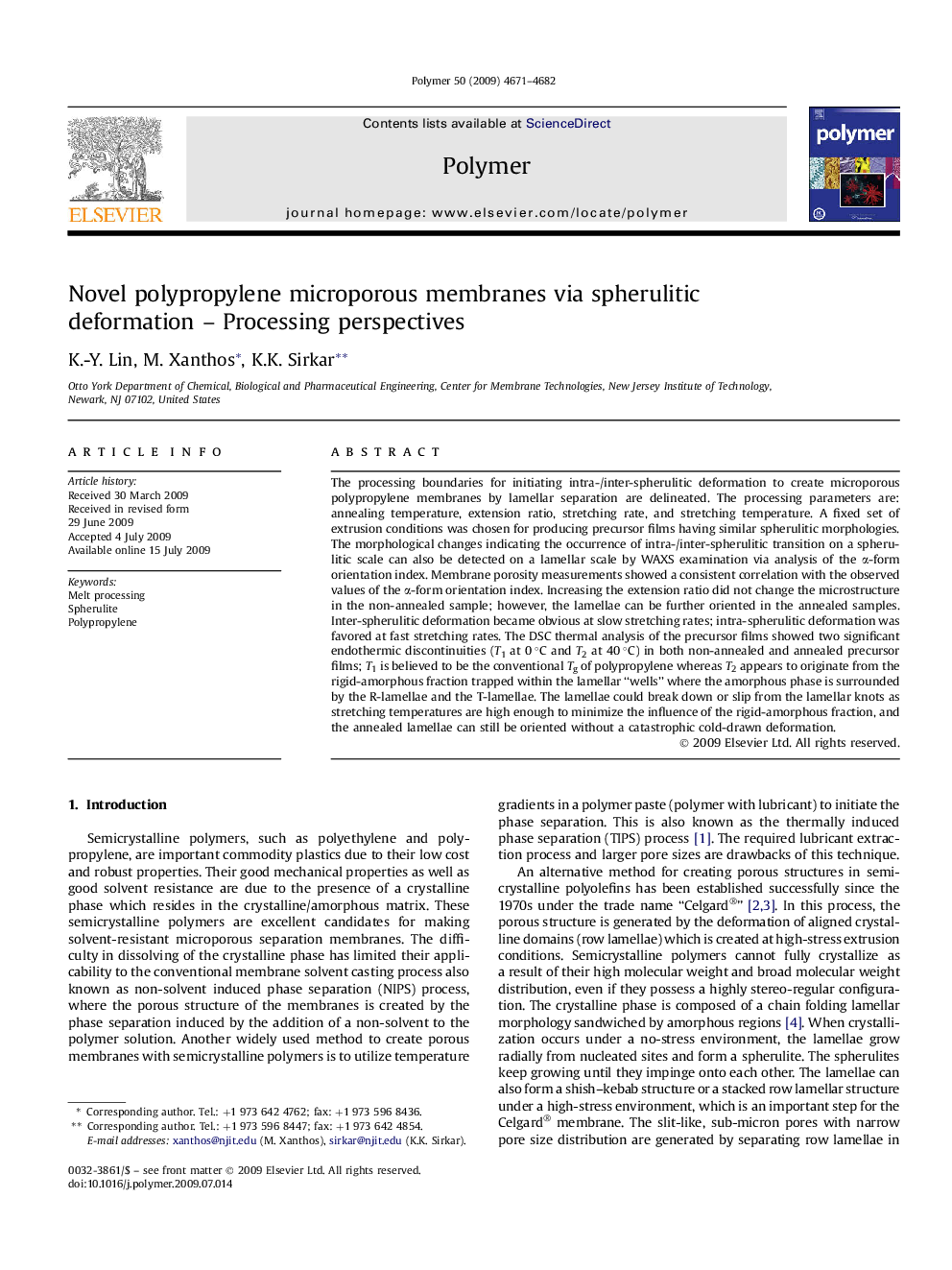| Article ID | Journal | Published Year | Pages | File Type |
|---|---|---|---|---|
| 5184692 | Polymer | 2009 | 12 Pages |
The processing boundaries for initiating intra-/inter-spherulitic deformation to create microporous polypropylene membranes by lamellar separation are delineated. The processing parameters are: annealing temperature, extension ratio, stretching rate, and stretching temperature. A fixed set of extrusion conditions was chosen for producing precursor films having similar spherulitic morphologies. The morphological changes indicating the occurrence of intra-/inter-spherulitic transition on a spherulitic scale can also be detected on a lamellar scale by WAXS examination via analysis of the α-form orientation index. Membrane porosity measurements showed a consistent correlation with the observed values of the α-form orientation index. Increasing the extension ratio did not change the microstructure in the non-annealed sample; however, the lamellae can be further oriented in the annealed samples. Inter-spherulitic deformation became obvious at slow stretching rates; intra-spherulitic deformation was favored at fast stretching rates. The DSC thermal analysis of the precursor films showed two significant endothermic discontinuities (T1 at 0 °C and T2 at 40 °C) in both non-annealed and annealed precursor films; T1 is believed to be the conventional Tg of polypropylene whereas T2 appears to originate from the rigid-amorphous fraction trapped within the lamellar “wells” where the amorphous phase is surrounded by the R-lamellae and the T-lamellae. The lamellae could break down or slip from the lamellar knots as stretching temperatures are high enough to minimize the influence of the rigid-amorphous fraction, and the annealed lamellae can still be oriented without a catastrophic cold-drawn deformation.
Graphical abstractDownload full-size image
